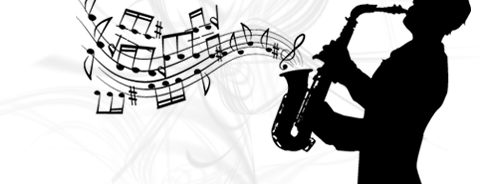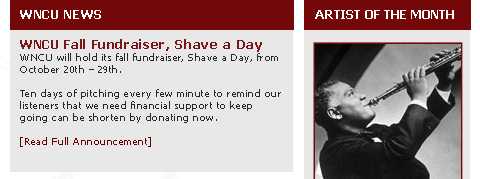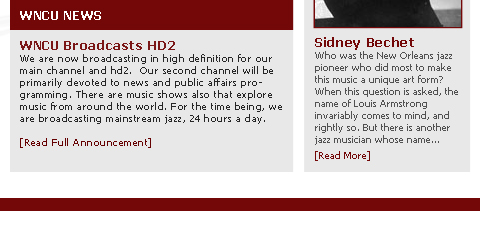Starting Sunday, December 5, WNCU will air a new program, European Jazz Stage from 7-8pm. And back by popular demand, from NPR, Jazz Profiles with Nancy Wilson will air at 8pm. From 9-10pm, all classic jazz. At 10, Bob Parlocha takes you through the overnight hours.
Author ArchiveNew Sunday LineupTuesday, November 30th, 2010European Jazz StageMonday, November 22nd, 2010From the great stages of Europe, Radio Netherlands Worldwide brings you this year’s European Jazz Stage with host Daniel Frankl. Go on a jazz vacation – 13 hours of performances beckon from venues across the continent including the acclaimed North Sea Jazz Festival. And we’ll bring jazz names you may not have heard including Han Bennink, Fay Claassen, Till Brönner and more. Don’t let the consonants and accents faze you — these musicians swing. Tune in Sunday night at 7pm. Toast of the Nation – New Year’s Eve on WNCUMonday, November 15th, 2010Count down, sing along, and dance to live music all night long. Travel from coast to coast with four celebrations of midnight from time zone to time zone. It’s the perfect holiday special for any New Year’s party. Here’s the latest rundown, with four midnights from coast to coast. Rhonda Hamilton anchors all night from Party Central, NPR in Washington, D.C.
Nat Adderley Thanksgiving SpecialMonday, November 15th, 2010
Tune in to WNCU on Thursday, November 25, at 4pm to hear NPR’s Jazz Profiles on Nat Adderley. NCCU Jazz Studies Program’s Annual Fall Artist SeriesMonday, November 8th, 2010
Pianist and composer Mulgrew Miller will perform with the NCCU Jazz Ensemble, Combo Band, and the Vocal Jazz Ensemble. Miller will hold a master class at 2 p.m. in the Band Room, located in the B.N. Duke Annex. The master class is open to the public and is free of charge. Purchase your tickets by calling (919) 530-6486 or stopping by the A.E Student Union, Suite 125, from 8 a.m. – 10:30 p.m., Monday – Saturday, 2 – 8:30 p.m., Sunday. George BensonMonday, November 1st, 2010
By the early ’60s, Benson had joined jazz organist Jack McDuff’s band – a consummate musician who took many young players on the road to help fortify their technique. “Jack turned me on to a lot of stuff,” muses Benson. “A lot of the jazz tunes we played together were danceable, and that furthered my understanding of what people wanted. When jazz was danceable, it was king. The He left to form his own band and launch his solo career with the 1964 album, The New Boss Guitar (a nod to Montgomery’s album, Boss Guitar, released just a year earlier). The album caught the attention of legendary talent scout John Hammond. Benson recorded two solo albums for Columbia and played session dates for numerous other artists, including Miles Davis’ 1968 opus, Miles in the Sky. He left Columbia in the late ’60s and recorded on a number of labels for the next several years. All the while, he’d been looking for a way to redevelop his vocals and make them part of his overall repertoire, but most of the producers and record executives at the time dismissed the idea, which became a source of growing frustration. But producer Tommy LiPuma saw the idea differently, and the result was Breezin’, the 1976 blockbuster pop album that marked the beginning of a long association with Warner Brothers. The first Benson record to achieve platinum sales, Breezin’ yielded a number of hits, including the instrumental title track, the update of Leon Russell’s “This Masquerade” and “Give Me The Night.” Throughout the remainder of the ’70s and into the ’80s, Benson and LiPuma crafted a string of great pop records that collectively cemented the guitarist’s global reputation as a singer. In the mid-’90s, Benson followed LiPuma to the GRP label, where the two basically picked up where they’d left off at Warner Brothers. Since the start of the millennium, Benson has shown no signs of slowing down and has a heavy touring schedule. In Havana, Jam Sessions With a Master TrumpeterWednesday, October 13th, 2010
The Jazz at Lincoln Center Orchestra played at the Mella Theater during its a one-week residency in Cuba. “He told me, ‘You have something special,’ ” recalled Mr. Rodríguez, who has been studying music for seven years at the Amadeo Roldán Conservatory in Havana. Mr. Marsalis led Mr. Rodríguez to the empty theater and gave him a late-night lesson, playing blues on the piano while Mr. Rodríguez played his trumpet. The master trumpeter gave his pupil tips on musical phrasing and some encouragement as well, Mr. Rodríguez said. “He told me, ‘You’re serious about what you do, and I like what you do,’ ” added Mr. Rodríguez, who said he was so overwhelmed by Mr. Marsalis’s attention that he broke down in tears midway through the class. “I felt like my soul was bursting out of my body. I mean, if Wynton Marsalis says you’re good at the trumpet, then that’s a big deal.” Not everyone, though, was awed by the famous American players who descended on Havana for a whirlwind series of encounters that took them from dark rumba joints to the scruffy, vibrant conservatories where Cuba’s young talent is schooled. Dayrón Rodríguez, no relation to the trumpeter, a 12-year-old bongo fiend, didn’t flinch when he was invited to jam onstage with the Lincoln Center band and 13 other Cuban musicians for the rousing Saturday finale of the group’s residency. Mr. Rodríguez, the trumpeter, also played in the concert. “It’s not the first time I’ve played with great musicians,” said Dayrón, who noted that he had sat in with Yaroldy Abreu Robles, a family friend and percussionist for Chucho Valdés’s Afro-Cuban Messengers. A grinning Dayrón skipped onto the stage on Saturday night. Along with his bongos he brought a copy of a CD on which he had played, flashing it to band members whenever he got the chance. The Lincoln Center players came to spread the word of American jazz to Cuban music lovers, and they found an eager audience. Cuban musicians are hungry for all the information they can get. Relatively few foreign bands visit Cuba, and the island’s Internet reach is low. (In a recent government survey less than 3 percent of Cubans said they had been online in the past year.) Several of the teenage students who jammed with the Lincoln Center players last week said they had never used the Internet and did not have access to a computer or own an MP3 player. They relied on people who traveled overseas to share music with them, they said. Many members of the Lincoln Center group said they were impressed by the young musicians who performed at workshops, sat in on rehearsals and filled the hotel lobby at night to pepper them with questions. “I love their talent, their attitude, their seriousness and their culture,” said Carlos Henriquez, the Lincoln Center bass player. “Their dedication is unbelievable. We don’t get that in the States.” There was much talk of bridges last week: the one between Cuba and the United States, and the one between Afro-Cuban music and American jazz. Jazz at Lincoln Center came trundling over that bridge on Oct. 2 to jam with Cuban stars and teenage students, to give a workshop for children and to perform four concerts with a lineup of Cuban players that included Chucho Valdés; Eliade Terry, known as Don Pancho, the country’s foremost chekeré player; Bobby Carcassés; and Orlando Valle, known as Maraca. “The bridge was built when Chano Pozo and Dizzy started doing their thing — even before that,” said Mr. Henriquez, referring to the historic collaboration in the late 1940s between that Cuban percussionist and Dizzy Gillespie. “What we’ve done this week is repave the bridge.” This was possible partly because American officials are interpreting travel restrictions less rigidly under President Obama than they did under George W. Bush. They are letting more Cuban artists visit America, and vice versa. Now that the bridge is in use again, the musicians wondered how to keep the traffic flowing. Mr. Valdés, the veteran pianist and co-artistic director of the residency, said the next step would be to get American musicians to come to Havana’s jazz festival in December. The festival has flagged in recent years, as it became difficult for the Americans to attend after President Bush tightened travel restrictions in 2003. “Let anyone come who wants to come,” Mr. Valdés said during a rehearsal break last week. “I would open the door really wide.” Mr. Valdés also wants to see more Cubans and Americans participating in exchange programs. “Imagine if we could get Americans coming here to study Afro-Cuban rhythms, coming and going without any kind of problem, without politics getting in the way,” he said. “That would be my dream.” For about 200 years Afro-Cuban rhythms nourished the American music from which jazz emerged, as commerce and people flowed freely between Havana and New Orleans. But that rich trade was essentially shut down when the United States severed diplomatic and commercial ties with Cuba and its Communist leader, Fidel Castro, in the early 1960s. The two cities may be cut off from each other, but the spirit of New Orleans was present in Havana during the Lincoln Center residency. “I see many things here that are exactly like New Orleans: the architecture, the feeling of the people, the climate, the community,” said Mr. Marsalis, a native of New Orleans. He pointed to the shared African roots of the roll call, in which New Orleans musicians call the names of deceased players, and the Yoruba blessing sung in Cuban rumba; and to the influence the Cuban habanera rhythm had on ragtime. “Cuban music is in the roots of our music. This is an opportunity to reconnect, to deepen our communality” he said. So it was fitting that the penultimate event of the residency should include a New Orleans-style parade. On Saturday the players treated 1,500 music students from five schools around Havana to a workshop at the Mella Theater, dissecting the “three pillars” of jazz — swing, blues and improvisation — and bringing students onstage to play with them. At the end the audience danced and clapped as the Americans played blues and paraded through the auditorium, trailing a line of Cuban trumpeters, violinists, clarinetists and saxophonists. And then the band marched out of the theater, through the stage door and into the warm Havana afternoon, still tooting their horns, dancers twirling handkerchiefs behind them. A crowd waved and cheered as the musicians headed to their bus. Then the sound of brass trailed off, and the players were gone. NCCU Homecoming Nears; Dollar Impace SubstantialMonday, October 11th, 2010
The annual autumn ritual brings more than memories to the city. The Durham Convention and Visitors Bureau estimates that the weeklong series of student, alumni and public events pumps $1.03 million into Durham’s economy in visitor spending. That fattens Durham’s tax coffers by nearly $22,000, a financial bonus in a year when city and county revenues may sag again. “Each year, Durham warmly welcomes the thousands of North Carolina Central University alumni and fans who return to our city to enjoy food, fellowship and fun during homecoming and all of the events associated with it,” said Durham Mayor William V. “Bill” Bell. “NCCU’s homecoming, like so many of the events we are proud to host in Durham, has a significant impact on the overall economic well being” of the city, he said. Homecoming week officially begins with the crowning of Miss NCCU on Oct. 24 at 5 p.m. in the gymnasium. The event will pause at 8 p.m. for a citywide fireworks show over the campus. The Founder’s Day Program is open to the public and is scheduled to begin at 9 a.m. on Oct. 29, in McDougald-McLendon Gymnasium. The speaker is Peggy Ward, a 1974 NCCU alumna and one of six people awarded an inaugural Shepard Medallion at the NCCU Centennial Gala in May. Ward is a former member and chairwoman of the NCCU Board of Trustees. In a long career in the insurance business, Ward has earned numerous honors for her service to customers and the industry. The grand marshal of the popular Homecoming Parade will be Jeffrey L. Throop, president of the Tournament of Roses. NCCU’s Sound Machine Marching Band was chosen to perform in the 2011 Rose Parade, one of just a few historically African-American university bands invited to perform in the parade’s 122-year history. NCCU’s Homecoming parade begins at 9 a.m. on Oct. 30 at W.G. Pearson Elementary School on Fayetteville Street and ends at Fayetteville and Lawson Streets. Police will close streets several minutes before the parade begins. The homecoming football game, at 2 p.m. in O’Kelly-Riddick Stadium, pits NCCU against Florida’s Edward Waters College. For the first time, alumni who want to attend evening events will be able to place their youngsters in an on-campus child-care program. Children five to 13 can be enrolled in the Eagle Homecoming Camp, which will operate from 6 p.m. to 2 a.m. on Oct. 29 and 30. It includes supper, snacks and games. The price of the camp varies depending on whether child is enrolled for one night or two. Other traditionally popular events held during the week, some of which have an admittance charge, include:
A complete schedule of events is on NCCU’s homecoming website, www.nccu.edu/homecoming . Tickets to many events also can be purchased on the site. WNCU Broadcasts HD2Saturday, October 2nd, 2010We are now broadcasting in high definition for our main channel and hd2. Our second channel will be primarily devoted to news and public affairs programming. There are music shows also that explore music from around the world. For the time being, we are broadcasting mainstream jazz, 24 hours a day. We intend to have an experimental approach to hd2, so please don’t be surprised at some opinions you may hear. They may be off beat, but that’s what public radio does so well, discourse, in depth, and from diverse points of view. So, if you have an HD radio, tune in to our second channel, hd2, and see what’s cooking. |


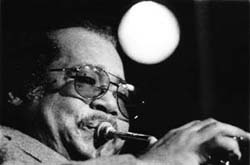 Nat Adderley was a top flight trumpet and cornet player. But he spent most of his career in the shadow of his older brother, saxophonist Julian “Cannonball” Adderley. Nat ran the band business and wrote many of their hits. When Cannonball died, Nat carried on, not only with the band, but also with the family tradition of educating the next generation.
Nat Adderley was a top flight trumpet and cornet player. But he spent most of his career in the shadow of his older brother, saxophonist Julian “Cannonball” Adderley. Nat ran the band business and wrote many of their hits. When Cannonball died, Nat carried on, not only with the band, but also with the family tradition of educating the next generation.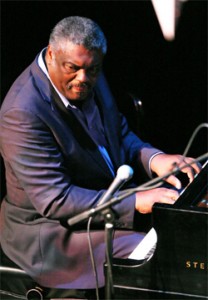 North Carolina Central University’s Jazz Studies Program’s Annual Fall Artist Series set for Friday, November 19, 8 p.m. in the B.N. Duke Auditorium.
North Carolina Central University’s Jazz Studies Program’s Annual Fall Artist Series set for Friday, November 19, 8 p.m. in the B.N. Duke Auditorium.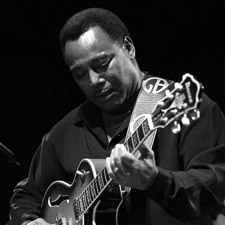 George Benson is at the center of a unique musical story that stretches all the way back to his early childhood in Pittsburgh. At age eight, he was already singing and playing the ukulele in local nightclubs. By his teenage years, he had switched from ukulele to guitar, and had stopped singing to focus more on his instrumental work. His musical sensibilities shifted toward jazz, due to his exposure to records by jazz legends Wes Montgomery, Charlie Christian and Charlie Parker.
George Benson is at the center of a unique musical story that stretches all the way back to his early childhood in Pittsburgh. At age eight, he was already singing and playing the ukulele in local nightclubs. By his teenage years, he had switched from ukulele to guitar, and had stopped singing to focus more on his instrumental work. His musical sensibilities shifted toward jazz, due to his exposure to records by jazz legends Wes Montgomery, Charlie Christian and Charlie Parker.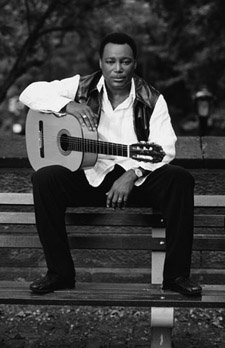 intellectual stuff that came later on – Charlie Parker and all that – turned toward a brainier sound. That was good, and I dug it”.
intellectual stuff that came later on – Charlie Parker and all that – turned toward a brainier sound. That was good, and I dug it”.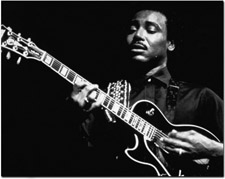
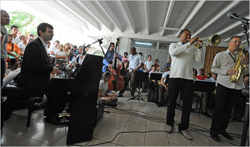 Originally posted by The New York Times
Originally posted by The New York Times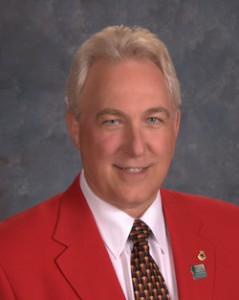 One of the more anticipated events on Durham’s annual calendar, North Carolina Central University’s homecoming, kicks off Oct. 24 with a fireworks show. Besides the football game on Oct. 30, other events include the Homecoming Parade and Founder’s Day, which honors Dr. James E. Shepard’s birthday. Shepard founded the university exactly 100 years ago.
One of the more anticipated events on Durham’s annual calendar, North Carolina Central University’s homecoming, kicks off Oct. 24 with a fireworks show. Besides the football game on Oct. 30, other events include the Homecoming Parade and Founder’s Day, which honors Dr. James E. Shepard’s birthday. Shepard founded the university exactly 100 years ago.

